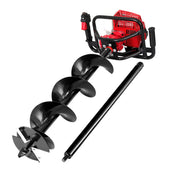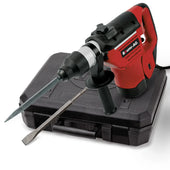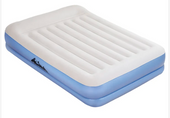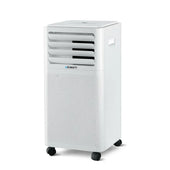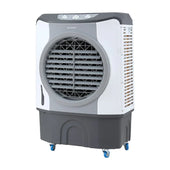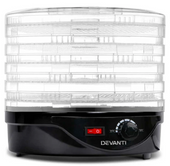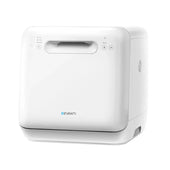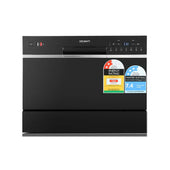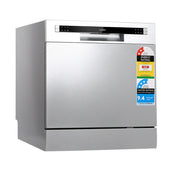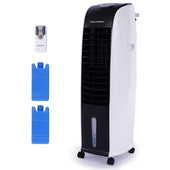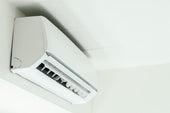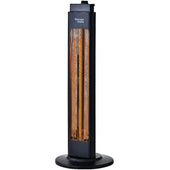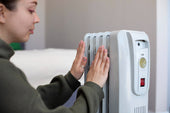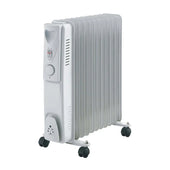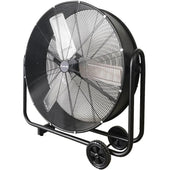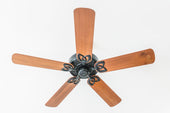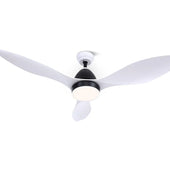Understanding the Importance of a Clean Office Chair
A clean office chair is essential for maintaining hygiene and promoting good health in the workplace. Dust, dirt, and allergens can accumulate over time, leading to potential health issues such as respiratory problems or skin irritation. Regular cleaning also preserves the chair’s material, whether it’s leather office chair, fabric, or mesh, preventing premature wear and tear.
An unclean chair can harbour bacteria, especially in shared office spaces, increasing the risk of illnesses. At During Days, a clean chair contributes to a professional and organised work environment, which can enhance productivity and morale. Proper maintenance ensures the chair remains comfortable, functional, and visually appealing.
Identifying Your Office Chair Material: Fabric, Leather, or Mesh
The material of an office chair greatly influences its cleaning process and maintenance needs. Recognising whether the chair is made of fabric, leather, or mesh is essential before choosing the right cleaning method.
- Fabric: Typically used for upholstered chairs, fabric requires gentle cleaning to avoid wear and fading. It often holds stains and odours, demanding regular vacuuming and occasional spot cleaning.
- Leather: Leather chairs are durable but prone to scratches and cracks if improperly cared for. They often need specialised cleaners or conditioners to preserve their shine and prevent drying.
- Mesh: Mesh material promotes airflow but can trap dust and debris. It needs soft brushing or vacuuming for effective cleaning without damaging the delicate weave.
Understanding the material ensures safe cleaning practices and maintains the chair’s longevity.
Gathering the Necessary Cleaning Supplies
To clean an office chair effectively, it is crucial to assemble all the required supplies beforehand. Begin by identifying the chair’s material—fabric, leather, mesh, or plastic—which determines the type of products needed. Common supplies include a vacuum cleaner with a brush attachment for removing dirt and debris, a microfibre cloth for wiping surfaces, and a mild cleaning solution suitable for the chair’s fabric. For stubborn stains, a specialised stain remover or rubbing alcohol may prove essential. Additionally, a bowl of warm water and soft-bristled brush can help tackle any built-up grime. Ensure access to paper towels or dry rags for drying thoroughly.
Prepping Your Office Chair Before Cleaning
Proper preparation ensures effective cleaning and prevents damage to the chair’s materials. Follow these steps:
-
Inspect the Chair Examine the chair closely to identify stains, spills, or areas needing extra attention. Check for manufacturer care labels that include cleaning instructions.
-
Gather Supplies Collect all necessary supplies, such as a vacuum with attachments, a soft cloth, mild soap, brushes, and disinfectant. Choose appropriate cleaners based on the fabric or material.
-
Clear the Area Remove clutter from around the chair for ease of movement. Place a protective sheet or towel under the chair to catch any debris or drips.
-
Vacuum Dust Use a vacuum with an upholstery attachment to remove loose dust, crumbs, and debris from the seat, backrest, and crevices.
Ensuring thorough preparation lays the groundwork for effective cleaning.
How to Clean Fabric Office Chairs Effectively
Cleaning fabric office chairs requires proper attention to preserve their material and extend their life. Begin by vacuuming the surface using an upholstery attachment to remove dust, dirt, and crumbs. For stains, consult the manufacturer’s cleaning code, found on the chair’s tag, to determine whether water-based, solvent-based, or a combination cleaner is suitable.
Use a clean cloth or sponge to apply the designated cleaner, dabbing gently rather than rubbing to avoid embedding dirt. Allow time to dry and use a soft brush to restore the fabric’s texture if needed. Routine maintenance helps maintain a chair’s appearance and comfort.
Cleaning Leather Office Chairs: Steps and Precautions
Executive office chair options, often made of leather, require special care to maintain their durability and appearance. Follow these steps and precautions for effective cleaning:
Steps to Clean Leather Chairs:
- Dust and Vacuum: Remove loose dirt using a soft cloth or a vacuum with a brush attachment.
- Test Cleaning Solution: Mix mild soap with warm water, then test on a hidden area to avoid damage or discolouration.
- Wipe Gently: Use a damp microfiber cloth to clean the surface, ensuring minimal water contact to prevent staining.
- Dry Immediately: Pat the chair with a dry cloth to avoid moisture soaking into the leather.
- Apply Conditioner: Use a leather conditioner to preserve flexibility and prevent cracking.
Precautions to Take:
- Avoid overly wet cloths or abrasive materials that may scratch the leather.
- Keep away from ammonia-based or harsh cleaners, as they degrade leather finishes.
- Prevent prolonged exposure to direct sunlight, which might cause fading.
Maintaining Mesh Office Chairs for Longevity
Proper care ensures mesh office chairs remain durable and comfortable. Cleaning should begin with removing loose debris using a vacuum cleaner or soft brush attachment. Avoid applying excessive force to preserve the delicate mesh structure. For stains, use a mild detergent mixed with water and gently rub the affected area using a clean, non-abrasive cloth.
Key Maintenance Tips:
- Avoid direct sunlight: Prolonged exposure weakens mesh fibres.
- Check for sagging: Tighten screws or adjust tension mechanisms if needed.
- Inspect moving parts: Lubricate joints or wheels regularly to prevent wear.
Periodic attention minimises material damage and extends usability.
Removing Stubborn Stains and Spills
To tackle tough stains, first identify the type of material on the office chair. Fabric chairs may require a mild upholstery cleaner, while leather or mesh surfaces benefit from specific care products. Consider popular options like the Artiss office chair when selecting models with easy-to-clean surfaces.
- Blot the spill immediately: Use a clean, absorbent cloth to soak up excess liquid without rubbing, which could spread the stain.
- Test the cleaner: Apply a small amount of the cleaning solution to an inconspicuous area to ensure it does not damage the fabric or colour.
- Clean the stain: Gently scrub the area using a soft-bristled brush or cloth, going in circular motions for even coverage.
- Rinse and dry: Dampen a cloth with water to remove residue; pat the spot dry with a towel. Repeat if necessary.
Disinfecting Office Chairs for Hygiene and Safety
Maintaining hygiene in shared office spaces is essential for ensuring employee health and safety. Disinfecting office chairs requires attention to both the material of the chair and the cleaning agents being used. Begin by choosing a suitable disinfectant—look for products labelled effective against bacteria, viruses, and fungi.
Steps to Disinfect an Office Chair:
- Prepare the Chair: Remove cushions or detachable parts and inspect for dirt.
- Clean Before Disinfecting: Use a mild soap solution to wipe down the chair’s surface.
- Apply Disinfectant: Spray or wipe the disinfectant onto the chair, ensuring thorough coverage.
- Allow Air Drying: Let the disinfected surfaces dry completely for maximum efficacy.
Focus on high-contact areas like armrests, seat edges, and controls. Always refer to the manufacturer’s care instructions to avoid damage to the chair’s materials.
Drying and Reassembling Your Chair after Cleaning
Once the chair is cleaned, ensure all components are completely dry before reassembly. Residual moisture can cause metal parts to rust, warp wooden elements, or lead to mould growth on fabric. To speed up drying:
- Air Dry: Place the parts in a well-ventilated space. Open windows or use fans to circulate airflow. Avoid direct sunlight, which may cause fading or material damage.
- Use Microfibre Towels: Gently pat down fabrics, cushions, or mesh materials to absorb excess water.
- Apply Low Heat: If needed, use a hairdryer on the lowest heat setting for stubborn damp areas.
After drying, reattach parts in their original configuration, tightening screws and fittings securely.
Tips for Regular Maintenance to Keep Your Office Chair Spotless
- Dust Weekly: Use a soft microfibre cloth to wipe down the chair’s surface weekly, removing built-up dust and debris.
- Check Upholstery: Inspect fabric, leather, or mesh regularly for stains and clean them promptly using appropriate cleaners. If you have a black office chair, regular dusting also helps keep the colour rich and clean.
- Vacuuming: Use a small vacuum or handheld cleaner to reach crevices and fabric folds for dirt and crumbs.
- Protect Against Spills: Place a protective mat under the chair to guard against accidental spills on or around the chair.
- Lubricate Moving Parts: Ensure chair wheels and swivel mechanisms are free from dirt and periodically lubricate them for smooth operation.
- Avoid Harsh Chemicals: Stick to mild cleaning agents to prevent damage to finishes, colours, or coatings on the chair.
Regular attention to small details keeps your chair hygienic and prolongs its durability.
Common Mistakes to Avoid When Cleaning an Office Chair
- Using Harsh Chemicals: Many cleaning products contain strong chemicals that can damage the upholstery or discolour the chair. Always check labels and opt for mild cleaners.
- Skipping the Fabric Type Check: Different fabrics require specific cleaning methods. Using a wet cleaner on a chair labelled for dry cleaning only can ruin the material.
- Soaking the Chair: Overusing liquid cleaners can result in water seeping into the cushioning, causing odours or mould growth. Use damp cloths instead of saturating the chair.
- Neglecting Regular Maintenance: Allowing dirt, dust, and spills to accumulate increases cleaning difficulty and reduces the chair’s lifespan. Regular upkeep is crucial.
- Not Testing Cleaners: Skipping a patch test could result in unexpected damage. Always test cleaning products on a hidden section of the chair first.
When to Call a Professional Cleaning Service for Office Chairs
There are instances when professional cleaning services are recommended for office chairs. If the chair’s upholstery or material cannot be safely cleaned with household products, a professional cleaner is required. Severe stains, deep grime, or odours, especially in fabric or mesh chairs, may demand expert attention. Chairs made of delicate or specialised materials, such as leather, often need professional treatment to avoid damage. Additionally, chairs in offices with high traffic or shared use may require periodic deep cleaning for hygiene. Professional services also prove essential when large-scale cleaning is needed for multiple chairs in commercial settings.
How Clean Office Chairs Can Improve Productivity and Health
Clean office chairs positively influence both productivity and well-being. Regular cleaning removes allergens, bacteria, and dust, which can reduce respiratory issues and allergic reactions. A hygienic workspace fosters mental clarity and promotes focus, as employees are less distracted by dirt or odours.
Comfort is enhanced when ergonomic office chair features like lumbar support are kept free of debris, ensuring proper posture and minimising discomfort during long working hours. Cleanliness also reduces wear and tear on chairs, preserving their functionality. Ultimately, organisations can experience higher morale and fewer sick days, benefiting both individual health and collective workplace efficiency.





